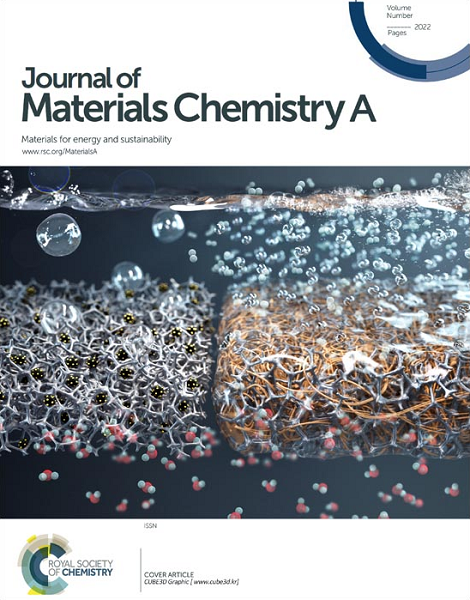Interface M-O-Fe (M=Ru, Rh, Pd, Ag) Bonding Excitation Stabilized Bifunctional Electrocatalysts for Water Splitting
IF 9.5
2区 材料科学
Q1 CHEMISTRY, PHYSICAL
引用次数: 0
Abstract
The design of efficient catalysts with atom clusters (ACs) and single atoms (SAs) as active sites for water splitting presents an effective approach for improving bifunctional electrocatalytic performance by synergistically promoting electron transport and proton transfer kinetics. In this work, a series of Fe2O3-supported noble metal catalysts (M = Ru, Rh, Pd, Ag) incorporating both ACs and SAs sites were developed, with detailed characterization identifying Ru ACs as the primary active centers. The designed-interfacial M-O-Fe bonds play a critical role in charge redistribution, subsequently enhancing electron and proton transfer kinetics. The resulting heterostructure optimizes both the electronic environment and active site accessibility, yielding exceptional electrocatalytic performance. Further density functional theory calculations demonstrate that the incorporation of Ru species leads to increased filling of antibonding orbitals and modulation of the d-band center, subsequently reducing the energy barrier of the rate-determining steps to −0.267 eV for HER and 1.522 eV for OER, respectively. Consequently, the representative Ru/Fe2O3 with Ru content of 1.1 wt.% achieves an OER overpotential of 189 mV and a HER overpotential of 21 mV at a current density of 10 mA cm−2. This study highlights a novel approach to the design of advanced bifunctional electrocatalysts by engineering interfacial bridge bonds.界面M- o - fe (M=Ru, Rh, Pd, Ag)键合激发稳定双功能电催化剂的水裂解研究
设计以原子团簇(ACs)和单原子(SAs)作为水分解活性位点的高效催化剂,通过协同促进电子传递和质子转移动力学,为提高双功能电催化性能提供了有效途径。在这项工作中,开发了一系列含有ac和sa位点的fe2o3负载贵金属催化剂(M = Ru, Rh, Pd, Ag),并进行了详细的表征,确定Ru ACs为主要活性中心。设计的界面M-O-Fe键在电荷再分配中起关键作用,随后增强电子和质子转移动力学。由此产生的异质结构优化了电子环境和活性位点的可及性,产生了优异的电催化性能。进一步的密度泛函理论计算表明,钌的加入导致反键轨道的填充增加和d带中心的调制,随后将速率决定步骤的能垒分别降低到−0.267 eV (HER)和1.522 eV (OER)。因此,Ru含量为1.1 wt.%的代表性Ru/Fe2O3在电流密度为10 mA cm - 2时,OER过电位为189 mV, HER过电位为21 mV。本研究强调了一种通过工程界面桥键来设计高级双功能电催化剂的新方法。
本文章由计算机程序翻译,如有差异,请以英文原文为准。
求助全文
约1分钟内获得全文
求助全文
来源期刊

Journal of Materials Chemistry A
CHEMISTRY, PHYSICAL-ENERGY & FUELS
CiteScore
19.50
自引率
5.00%
发文量
1892
审稿时长
1.5 months
期刊介绍:
The Journal of Materials Chemistry A, B & C covers a wide range of high-quality studies in the field of materials chemistry, with each section focusing on specific applications of the materials studied. Journal of Materials Chemistry A emphasizes applications in energy and sustainability, including topics such as artificial photosynthesis, batteries, and fuel cells. Journal of Materials Chemistry B focuses on applications in biology and medicine, while Journal of Materials Chemistry C covers applications in optical, magnetic, and electronic devices. Example topic areas within the scope of Journal of Materials Chemistry A include catalysis, green/sustainable materials, sensors, and water treatment, among others.
 求助内容:
求助内容: 应助结果提醒方式:
应助结果提醒方式:


